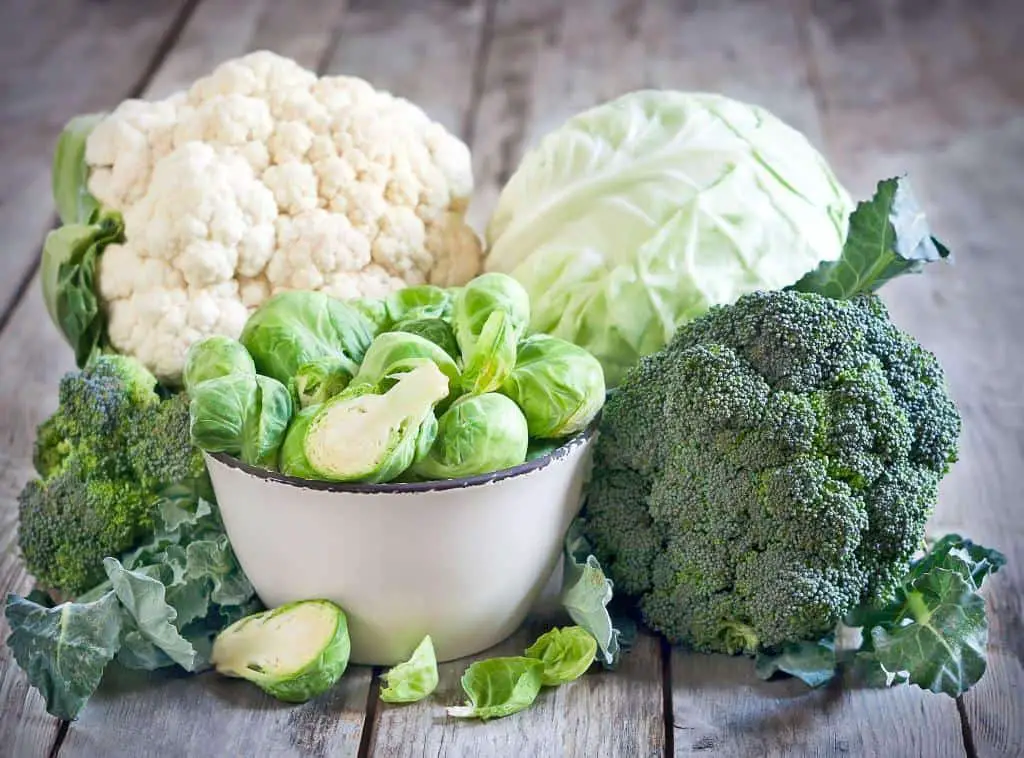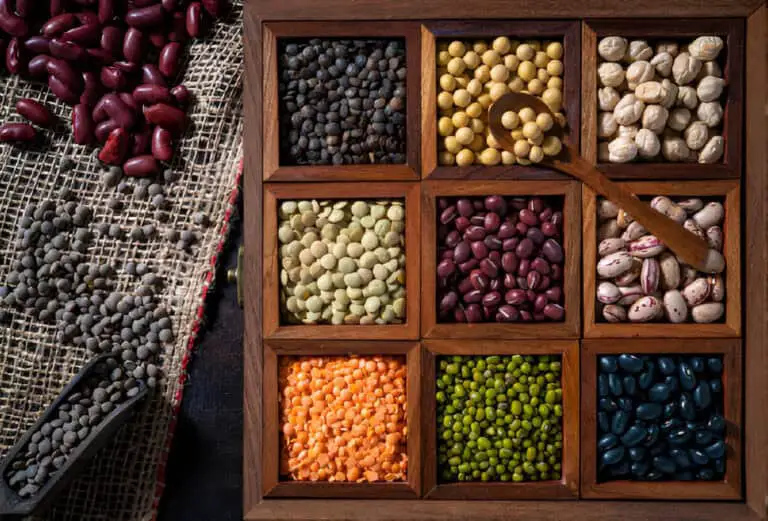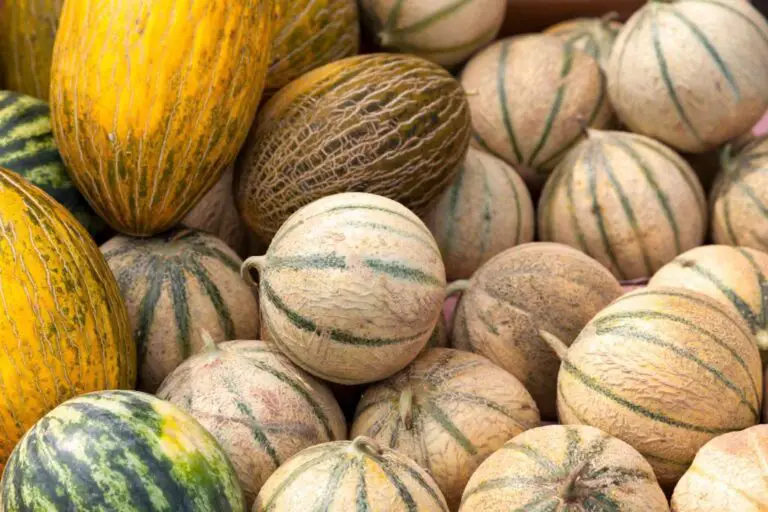Are Broccoli, Cauliflower, and Kale The Same? Exploring Cruciferous Cousins

When it comes to green vegetables, few can rival the popularity and nutritional value of broccoli, cauliflower, and kale. These cruciferous vegetables have gained a significant following due to their impressive health benefits and versatility in cooking. But are they really the same?
In this article, we’ll delve into the world of cruciferous cousins and explore the unique characteristics that set broccoli, cauliflower, and kale apart.
Get ready for a deep dive into the world of cruciferous cousins as we embark on a flavorful journey to uncover their similarities, differences, and why they’re the ultimate trifecta of healthy eating. So, grab your kale smoothie, put on your thinking caps, and let’s separate the facts from the veggie fiction!
Introduction to Cruciferous Vegetables
Broccoli, cauliflower, and kale are the shining stars of this vegetable group, each possessing its own unique characteristics while sharing a common lineage. Together, they form a trinity of nutritious powerhouses that have captured the attention of health enthusiasts and food lovers alike.
Let’s start with broccoli, the verdant crown jewel of the cruciferous kingdom. Its dense clusters of emerald florets boast a distinctive earthy flavor, offering a delightful crunch and a hint of sweetness. Whether steamed, roasted, or stir-fried, broccoli lends itself to a myriad of culinary creations. From hearty stir-fries and comforting soups to colorful salads and satisfying side dishes, this versatile veggie shines in every plate it graces.
Next up is cauliflower, the ivory wonder that has won over taste buds with its subtle yet remarkable taste. Its florets, reminiscent of snowy miniature trees, hold a delicate texture and a mild, slightly nutty flavor. What sets cauliflower apart is its chameleon-like ability to adapt to various cooking techniques. Whether riced, mashed, roasted, or even transformed into a grain-free pizza crust, cauliflower’s culinary versatility knows no bounds.
And then there’s kale, the leafy champion that has taken the health food scene by storm. Its dark, sturdy leaves exhibit a robust texture and a distinctive, slightly bitter taste. As a nutritional powerhouse, kale packs a punch with an abundance of vitamins, minerals, and antioxidants. From vibrant salads and crunchy kale chips to hearty sautés and nutrient-packed smoothies, this leafy green adds a burst of color and nutrition to any dish it graces.
While each member of the cruciferous family possesses its own unique characteristics, they also share a common bond. These remarkable veggies belong to the Brassicaceae family, also known as the mustard family, which includes other nutritious gems like Brussels sprouts, cabbage, and bok choy. What sets cruciferous vegetables apart is their rich concentration of compounds called glucosinolates, which have been linked to potential health benefits such as reducing the risk of certain cancers and providing anti-inflammatory properties.
Overview of Broccoli
Origin and History
Broccoli, originating from Italy, has a fascinating history that dates back over 2,000 years. It was first cultivated in ancient Rome and later gained popularity in Europe before making its way to the United States.
Nutritional Profile and Health Benefits
Broccoli is a nutritional powerhouse, boasting a wide array of vitamins, minerals, and antioxidants. It is particularly rich in vitamin C, vitamin K, folate, and fiber. Moreover, it contains beneficial compounds such as sulforaphane, known for its potential anticancer properties. Regular consumption of broccoli has been associated with a reduced risk of heart disease and certain types of cancer.
Culinary Uses and Popular Recipes
Broccoli’s versatility in the kitchen makes it a favorite among home cooks and professional chefs alike. It can be steamed, roasted, stir-fried, or added to soups and salads. Some popular broccoli recipes include broccoli and cheddar soup, roasted broccoli with garlic, and broccoli stir-fry with tofu.
Understanding Cauliflower
Background and Cultivation
Cauliflower, believed to have originated in the Mediterranean region, has a long history spanning thousands of years. Initially, cauliflower was found in its wild form, which was later cultivated and selectively bred to achieve the diverse cauliflower varieties we see today.
Nutritional Composition and Health Advantages
Cauliflower is low in calories but rich in essential nutrients. It is an excellent source of vitamin C, vitamin K, folate, and dietary fiber. Cauliflower also contains a compound called indole-3-carbinol, which has been studied for its potential anti-inflammatory and anticancer properties.
Different Ways to Prepare and Cook Cauliflower
Cauliflower’s mild, slightly sweet flavor and versatile texture make it a perfect ingredient for a variety of dishes. It can be steamed, roasted, mashed, or even used as a low-carb rice substitute. Cauliflower rice, buffalo cauliflower “wings,” and cauliflower pizza crust are some popular ways to enjoy this versatile vegetable.
Exploring Kale
Historical Background and Varieties
Kale, a leafy green vegetable, has a long history dating back to ancient Greece and Rome. It was one of the most common green vegetables in Europe until cabbage gained popularity. Today, there are several varieties of kale, including curly kale, Lacinato (also known as Tuscan or dinosaur kale), and red Russian kale.
Nutritional Value and Potential Health Benefits
Kale is often hailed as a superfood due to its exceptional nutrient content. It is a rich source of vitamins A, C, and K, as well as minerals like calcium and potassium. Kale also contains antioxidants and bioactive compounds that have been associated with various health benefits, including improved heart health and reduced inflammation.
Ways to Incorporate Kale into Meals and Snacks
Kale can be enjoyed in various ways, both cooked and raw. It is commonly used in salads, smoothies, soups, and stir-fries. You can also bake kale chips as a healthy alternative to potato chips or sauté it with garlic and olive oil as a delicious side dish.
Similarities among Broccoli, Cauliflower, and Kale
Shared Family and Botanical Classification
Broccoli, cauliflower, and kale all belong to the Brassicaceae family, also known as the mustard family. They share common botanical characteristics, including the cross-shaped flowers that give the family its name.
Comparable Nutrient Profiles and Health-Promoting Compounds
While each vegetable has its own unique nutrient composition, they all offer an abundance of vitamins, minerals, and phytochemicals. Broccoli, cauliflower, and kale are excellent sources of vitamin C, vitamin K, and dietary fiber. They also contain beneficial compounds such as glucosinolates, which have been linked to cancer prevention and detoxification processes in the body.
Potential Overlapping Benefits for Human Health
Due to their similar nutrient profiles, these cruciferous vegetables offer numerous health benefits that may overlap. They are known for their potential antioxidant, anti-inflammatory, and immune-boosting properties. Regular consumption of broccoli, cauliflower, and kale has been associated with reduced risks of chronic diseases, including heart disease and certain types of cancer.
Differences between Broccoli, Cauliflower, and Kale
Varied Appearances, Textures, and Flavors
Broccoli, cauliflower, and kale differ in their physical characteristics. Broccoli is known for its dense, tree-like clusters of green florets, while cauliflower forms a compact head composed of undeveloped flower buds. Kale, on the other hand, has large, leafy greens with a curly or bumpy texture. In terms of taste, broccoli has a mild, slightly bitter flavor, cauliflower is milder and slightly sweet, and kale can have a slightly earthy and peppery taste.
Contrasting Nutrient Content and Specific Health Benefits
Although all three vegetables offer valuable nutrients, there are differences in their nutrient profiles. For example, broccoli tends to be higher in vitamin C, while cauliflower contains more dietary fiber. Kale stands out as an exceptional source of vitamin K and antioxidants. These variations in nutrient content contribute to specific health benefits associated with each vegetable.
Cooking Techniques and Recipes that Highlight Their Distinct Characteristics
Broccoli, cauliflower, and kale each have unique qualities that can be highlighted through different cooking techniques. Broccoli is commonly steamed or roasted to maintain its texture and color. Cauliflower is often roasted or mashed to create creamy and flavorful dishes. Kale is frequently enjoyed raw in salads or sautéed to enhance its tenderness and flavor. By experimenting with various cooking methods, you can bring out the best in each cruciferous vegetable.
A Comparison of Nutritional Profiles
To better understand the unique attributes of broccoli, cauliflower, and kale, let’s compare their nutritional profiles in the following table:
| Nutrient (per 100g) | Broccoli | Cauliflower | Kale |
| Calories | 34 | 25 | 49 |
| Vitamin C | 89.2 mg | 48.2 mg | 93.4 mg |
| Vitamin K | 101.6 µg | 15.5 µg | 704.8 µg |
| Folate | 63 µg | 57 µg | 141 µg |
| Fiber | 2.6 g | 2 g | 2 g |
| Calcium | 47 mg | 22 mg | 150 mg |
| Potassium | 316 mg | 299 mg | 491 mg |
| Antioxidants | High | Moderate | High |
| Glucosinolates | Yes | Yes | No |
| Isothiocyanates | No | No | Yes |
| Color | Green | White | Green |
| Texture | Florets | Florets | Leaves |
Choosing the Right Cruciferous Vegetable for Your Needs
Factors to Consider when Selecting Between Broccoli, Cauliflower, and Kale
When choosing among these cruciferous vegetables, several factors come into play. Consider your personal preferences in terms of taste and texture. Additionally, think about the specific health benefits you’re seeking. For example, if you’re aiming to boost your vitamin C intake, broccoli might be the best choice. If you’re looking to increase your dietary fiber, cauliflower could be a great option. Take into account your culinary plans and how well each vegetable fits into your recipes.
Dietary Preferences and Culinary Compatibility
Your dietary preferences, including vegetarian, vegan, or gluten-free, can influence your choice of cruciferous vegetables. Broccoli, cauliflower, and kale are all versatile and can be incorporated into a wide range of dishes. Explore recipes that align with your dietary needs and experiment with different combinations of flavors and textures.
Tailoring Choices Based on Individual Nutritional Requirements
Individuals with specific nutritional requirements, such as those with dietary restrictions or health conditions, may need to choose their cruciferous vegetables accordingly. For instance, individuals with thyroid conditions may need to moderate their intake of certain cruciferous vegetables due to their potential impact on iodine absorption. Consulting with a healthcare professional or registered dietitian can provide personalized guidance based on your specific nutritional needs and health concerns.
Conclusion and Future Perspectives
In conclusion, while broccoli, cauliflower, and kale belong to the same cruciferous family, they offer unique flavors, textures, and health benefits. Incorporating these nutrient-dense vegetables into your diet can contribute to overall wellness and support a healthy lifestyle. Whether you enjoy them individually or combine them in delicious recipes, broccoli, cauliflower, and kale provide a wealth of culinary possibilities and nutritional advantages.
As research continues to unveil the immense health-promoting properties of cruciferous vegetables, future perspectives include exploring new varieties, cultivation techniques, and innovative culinary applications. By continually incorporating these cruciferous cousins into our meals, we can unlock their full potential for nour
FAQs
Are broccoli, cauliflower, and kale considered superfoods?
Yes, broccoli, cauliflower, and kale are often considered superfoods due to their exceptional nutrient profiles and potential health benefits. They are packed with vitamins, minerals, and antioxidants that support overall health and well-being. Regular consumption of these vegetables has been associated with various positive health outcomes, making them highly regarded in the realm of nutritious foods.
Can I substitute broccoli for cauliflower in a recipe?
Yes, you can generally substitute broccoli for cauliflower in many recipes. While there may be slight differences in taste and texture, both vegetables belong to the same family and can often be used interchangeably. Keep in mind that the cooking time may vary, so adjust accordingly. Experimenting with substitutions can add variety to your meals and allow you to enjoy the benefits of different cruciferous vegetables.
How do broccoli, cauliflower, and kale differ in taste?
Broccoli has a mild and slightly bitter flavor. It offers a subtle earthiness and a pleasant crunch when cooked properly. Cauliflower, on the other hand, has a milder and slightly sweet taste with a delicate texture. It tends to absorb flavors well, making it versatile for different recipes. Kale has a more robust and slightly bitter taste, especially in its raw form. Cooking kale can help mellow its flavor and tenderize its leaves.
How do I cook broccoli, cauliflower, and kale to retain maximum nutrients?
To retain maximum nutrients when cooking broccoli, cauliflower, and kale, it’s best to use methods that preserve their natural qualities. Steaming or lightly sautéing these vegetables helps to retain their nutrients while maintaining a desirable texture. Avoid overcooking or boiling them for extended periods, as this can lead to nutrient loss. Additionally, pairing these vegetables with ingredients rich in healthy fats, such as olive oil or nuts, can aid in the absorption of fat-soluble vitamins.






